After our meeting was finished in Tromsø, a couple good friend-colleagues and I rented a car to explore Arctic Norway a bit. One of the two did some extensive research on the area and the route we would follow, picking out some of the most scenically beautiful spots to stop each night. Norway, like the rest of Scandinavia, has an open policy on camping... you can set up camp almost anywhere in the country, even on private property! There are some limitations, such as fire restrictions (limited in the summer months only), length of stays, and tent distance from residences and buildings, but it is still the loosest camping policy I've ever encountered, which was greatly appreciated. So, here we go... basically, this is going to be a photo-heavy, word-lite post. Also, to stress the beauty of the place, none of these photos have been altered... they are as taken.
Shortly after we crossed the bridge to take us west off of Tromsøya Island (on which Tromsø sits), the scenery became epic. Tromsøya Island is small and very low-lying compared to its surroundings. Being at the base of large heavily-weathered mountains, most of the islands and mainland in this intricate coastline shoot up right out of the water.
The place isn't all wilderness though; there are plenty of small towns and farm houses along the sparse road network. There are also plenty of boathouses, showcasing the importance of the sea to these Northern Norwegians.
We stopped for our first night alongside the road just a little over a mile before it abruptly ended at the edge of the Norwegian Sea. We first thought about setting up camp down by the water of this bay, but the wind blowing down from those mountains across the way was strong and cold. So instead, we crossed the road and set up our tents amongst the tall grass and shrubs at the base of a hill, which offered some relief from the wind. The spots we were scoping out had been used before for camping. What we found was that in most good places for camping along the roads, someone has already set up there before, which is kind of nice since there are already clear, flat spots for tents and established fire rings.
We decided to take a hike up the hill beside our camp to get a better view down on our destination. There was a very rough trail that wavered in and out of existence along the way. This is a shot looking down on the road on which we came in. Our rental car is visible parked down there by the water if you look hard enough for it.
So views like this were the reason we came out this way. This little archipelago is known as Sommarøy, and it sits right out in the Norwegian Sea at the edge of the country. There is a small community living in this remote place, a little over an hour's drive from Tromsø.
We benefitted from that perfect Arctic lighting again, with its long sunsets. Our hike up the hill took a little under half an hour, and the sun was already "setting" when we started. It was still on its way down when we got up there, and took another hour or more to actually set, leaving us with these beautiful pastels thanks to the cloud cover.
Sommarøy has this incredibly crystal clear water and white sand beaches! It was bizarre to see such a seascape in the Arctic Circle. The archipelago is just beautiful though, with so many little strands of land scattered randomly throughout the area. Several of the islands had little houses too, with the only accessibility available via boat. As you can tell from the picture above, we also had some lovely fall colors to help paint the scene.
The landscape is harsh, with plenty of exposed bedrock islands amongst seas of spongy moss and tundra, which we would come to find dominates the ground cover around that part of Norway. With so much open space and gradients in the elevation, the winds were strong there too... and cold. Wild berries grow all over the place up there, including blueberries and crowberries and the rarer but incredibly delicious cloudberries. It was kind of crazy to be able to pick wild, fresh berries right off the ground and eat them... I've only found that in a couple other places. They were some of the tastiest blueberries I've ever eaten. Supposedly there are plenty of edible (and hallucinogenic) mushroom species growing in the forests of Northern Norway too... but you have to be pretty confident in your identification skills, since there are also plenty of deadly poisonous fungi up there as well!
I don't think I can stress enough the ruggedness and extremity of the landscape. The cliffs on that island in the distance are hundreds of feet high, if not more than a thousand.
And then there were more auroras. We lucked out this time with the light show taking place over the bay and a strand of white sand beach. I never imagined I'd be seeing auroras over a sandy beach... unreal.
The Moon was behind the mountain seen on the right of this picture, which helped light up the clouds but also not overwhelm the ghostly green aurora.
The show went on behind the torn curtain of clouds, but it was still impressive.
Up early and back on the road. Like I mentioned above, we passed plenty of boathouses and barns, some of which were obviously abandoned, which made them even more picturesque.
In many places I've visited around the world, I find myself asking: what do people do to earn a living around here? Apparently, many of the folks living in rural, Arctic Norway rely on livestock and farming. The growing season must be very short for anything growing out of the ground, but livestock can always be put into barns over the winter. In fact, we saw plenty of wrapped and drying bales of hay in many places, obviously being prepared for the imminent winter.
One of many homesteads we saw along the way. They are so idyllic. I really think I could be quite happy and content living in the countryside... especially surrounded by such beauty as there was in Norway. The older I'm getting, the more I'm appreciating a quiet and relaxed lifestyle. Though, I'm betting that ranching cattle might not be as relaxed as I'm hoping for... oh well.
In the grey, drizzly atmosphere that we had on day 2, the fall colors and painted buildings stuck out all the more. I love how the colors and contrast turned out for these shots of this barn.
Did I mention how characteristic those barns can be?
And the boathouses too... I loved this one with the rusting effect on the roof and the distinctive red sides with white trim. The different colored buildings in the background just added so much to it too.
Shortly after midday, we drove past our first reflecting pool, so of course we stopped to snap some shots. The glassy surface of the dark water created almost a perfect mirror effect, which was illuminated by the bright yellows and oranges of the fall foliage.
As you can tell from these pictures, it wasn't the clearest day. In fact, it was scattered showers with very low-lying clouds and mist. The atmosphere was cold and gloomy, which added a bit to the mysterious feel of the region. It honestly felt like we were driving through something from a fairy tale... we had entered troll country.
Just a little further along the road were even more reflecting pools... I love how the lighting on this one produced such vivid cloud detail in the reflection, but not in the real thing, and the opposite for the mountains.
It was mid September, but the autumn colors were in full force. We were told that they wouldn't last long... only a little over a week. The transition between summer and winter is very rapid in the polar regions. This made me realize again how lucky I was to be there at this time... it was as if the forces of nature aligned to show me Norway's spectacular perfection.
Our goal for the road trip was to drive out to the end of an archipelago known as Lofoten, which sticks out off of Northern Norway into the Norwegian Sea. This is a shot of us entering the region... it is a land of extreme and rugged beauty, renowned throughout Norway for that fact, which is saying a lot.
We found a great spot to camp by a bridge over a narrow channel separating two of the islands. The skies cleared early in the evening, which got us excited about the opportunity to see more auroras. Nature didn't let us down. The show started with this well defined arc on the northwestern horizon sometime around 11pm... like a rainbow in which only the green band showed up.
The arc started to break up and brighten in places, and there were even some curtain features. The dim light from the campfire was more than enough to light up the objects in the foreground too. You can see the big dipper clearly here too, from which (if you're familiar with celestial orientation) you can figure out where the North Star was. It was amazing to see the polar star at such a high angle of elevation, hinting at our polar latitudes.
The arc broke up in spectacular fashion. this was easily the most amazing auroral show we got during the trip. As I had done in Alaska, I found myself cheering and hollering like my team had just won the Super Bowl. It still amazes me how nature can evoke such powerful emotions and a strong sense of elation. In Norway, I found myself to be somewhat addicted to viewing the aurora. It really is like a drug... having seen one spectacular show, you want to get out and view another, with the hope that it might be even better than the first (though I wonder if and somewhat doubt that it ever will be). I checked the weather every night, and whenever it was clear, I was outside, sitting, waiting, and watching the sky.
The breakup just seemed to go on and on, yet the time flew by thanks to our excitement.
The afterglow. Later in the night the clouds rolled back in. It was really like nature had decided to treat us to a special show: rolling back the curtains, doing its blissful dance, and then retiring, closing the curtains again when it was all done.
The "troll bridge". I woke up to a wet tent and sleeping bag. I had apparently taken my trusty 3-season tent to its limits, and water had come in during the heavy rain overnight. Oh well, frustrating, but not a problem since we were just car camping. We joked around in the gloomy morning that the little structure on the island in the channel was the trolls hut. At night, there had even been a light on it (as a warning for ships), which we proclaimed was the troll leaving the light on for us. That of course evolved into my tent being soaked because the troll had pissed on it. Good times in troll country.
The overnight rain left us with plenty of fresh waterfalls for our drive in the morning.
All the moisture in the air creates perfect conditions for moss to grow too, which it seemingly does on just about every stationary surface.
Having plenty of water around Norway, and plenty of extreme gradients in the landscape, it is no wonder that the country derives the majority of its electrical power from hydroelectric power plants. It is remarkable just how much they get from hydro though: in 2008, supposedly more than 95% of Norway's power needs were satisfied by hydroelectric sources! The Norwegians are incredibly adept at civil engineering, and apparently damns are right up there with tunnels and bridges on their list of expertise.
Driving in Norway is a beautiful endeavor, though it is also often painfully slow. There are national speed limits, with only a very few places along empty highways seeing speeds over 80 km/h (~50 miles/hour). To add to the pain, there are speed cameras sprinkled here, there, and everywhere, and the cameras have zero tolerance for anything over the posted limit. That makes driving the length of the country, from Oslo in the south to Kirkenes in the far northeast take over 30 hours (of drive time!). I guess they figure you should take your time and enjoy the scenery.
Many places around Lofoten reminded me a lot of New Zealand... making it an instant favorite in my book.
On the drive back, we had one perfectly beautiful day... allowing us to take in what we had missed through the mist and fog on the drive out.
What did I say about those Norwegian civil engineers? Industrious as beavers they are.
We took a slight detour over to Narvik, which is a port city with a nice ski hill. It is a pleasant city, and it has long been the main shipping port for iron ore mined in Kiruna, just a couple hundred kilometers away in Sweden.
Narvik and the surrounding area saw the brunt of military action during World War II. The Nazis quickly swept through Norway after invading in the spring of 1940. Narvik was a strategic objective for both sides, since it is a year-round ice-free port and the main access point to (then neutral) Sweden's iron ore from the mines of Kiruna. So, the Allies launched the Norwegian campaign in response and targeted Narvik with a fleet of naval ships and ground forces. The battles raged for around 2 months, with the Allies achieving supremacy at sea but facing severe difficulties with the German mountain troops in their natural habitat and the wilds and severity of Arctic Norway. The Allies withdrew their forces in June of 1940, leaving Norway as an occupied territory for the remainder of the war. Around the region, there are many signs, plaques, and monuments marking particular spots of notable events during the war. It is pretty neat for all, and an added bonus for any WWII buff.
OK, back to the scenery.
I'll let these speak for themselves... not much more I can say here. It was like driving through some spectacular landscape painting, with just perfect illumination from the sun so low on the horizon. Yet, the work of no human could ever come close to beauty like this.
These last pictures were taken on the drive back, as we approached Tromsø and brought our journey to a close. It was as if Norway was letting us know exactly how much we'd be missing. We were all left a little nostalgic by it, even though we hadn't even left yet. I will make damned sure that I get back to explore Norway some more and return to this incredible part of the country at some point again in my life. It has undoubtedly become an instant favorite of mine.
How spectacular can a place be? Norway tested my comprehension of this question... the only other place in the world that I've found that did the same would be New Zealand, followed somewhat, but to a lesser extent, by British Columbia. I was astounded and left in complete awe of Norway, but the best is yet to come... just wait for the next post on Lofoten itself.

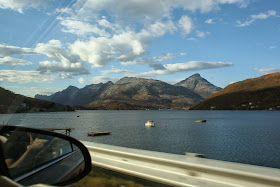













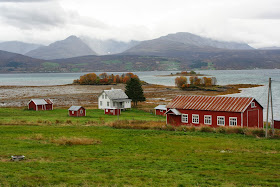




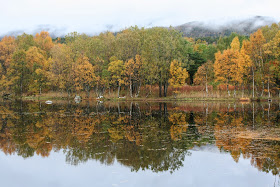






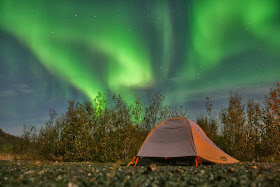
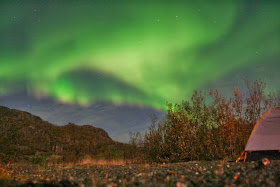

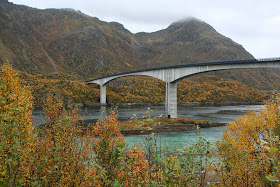















No comments:
Post a Comment